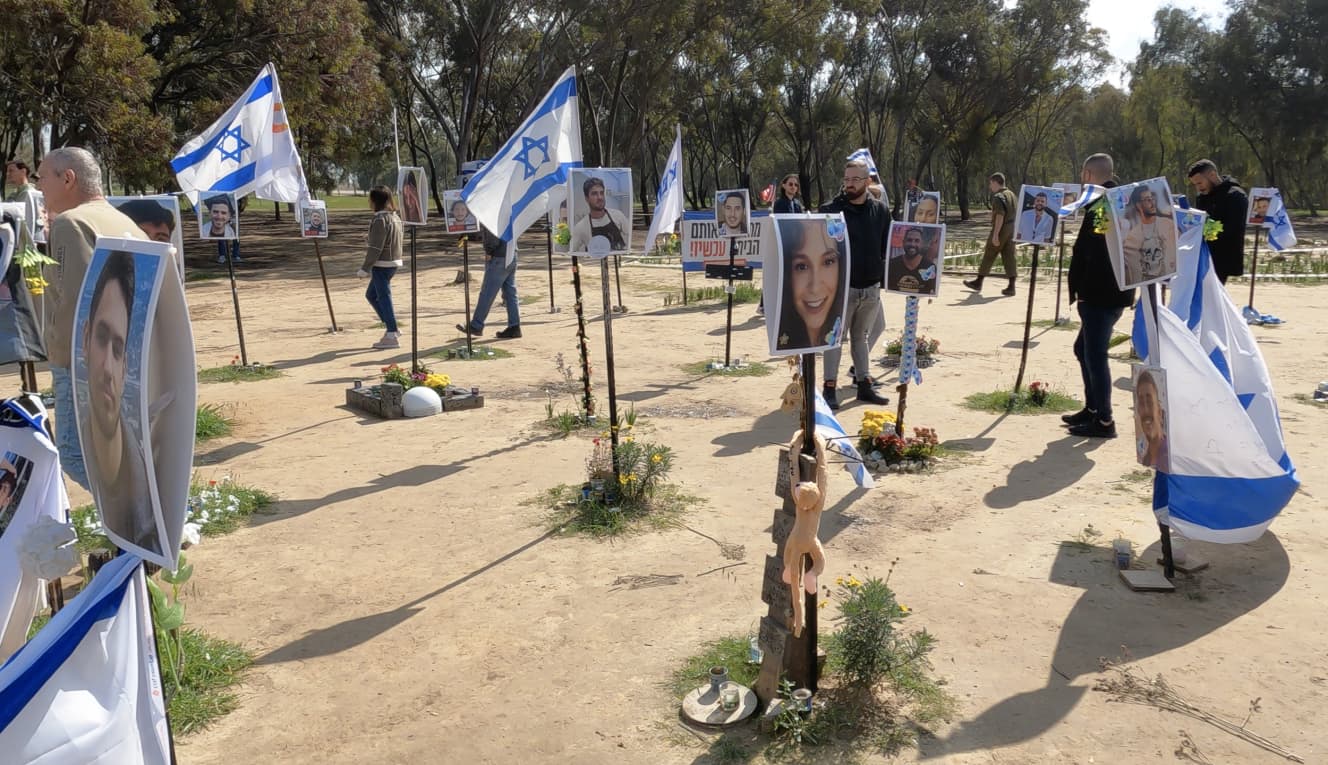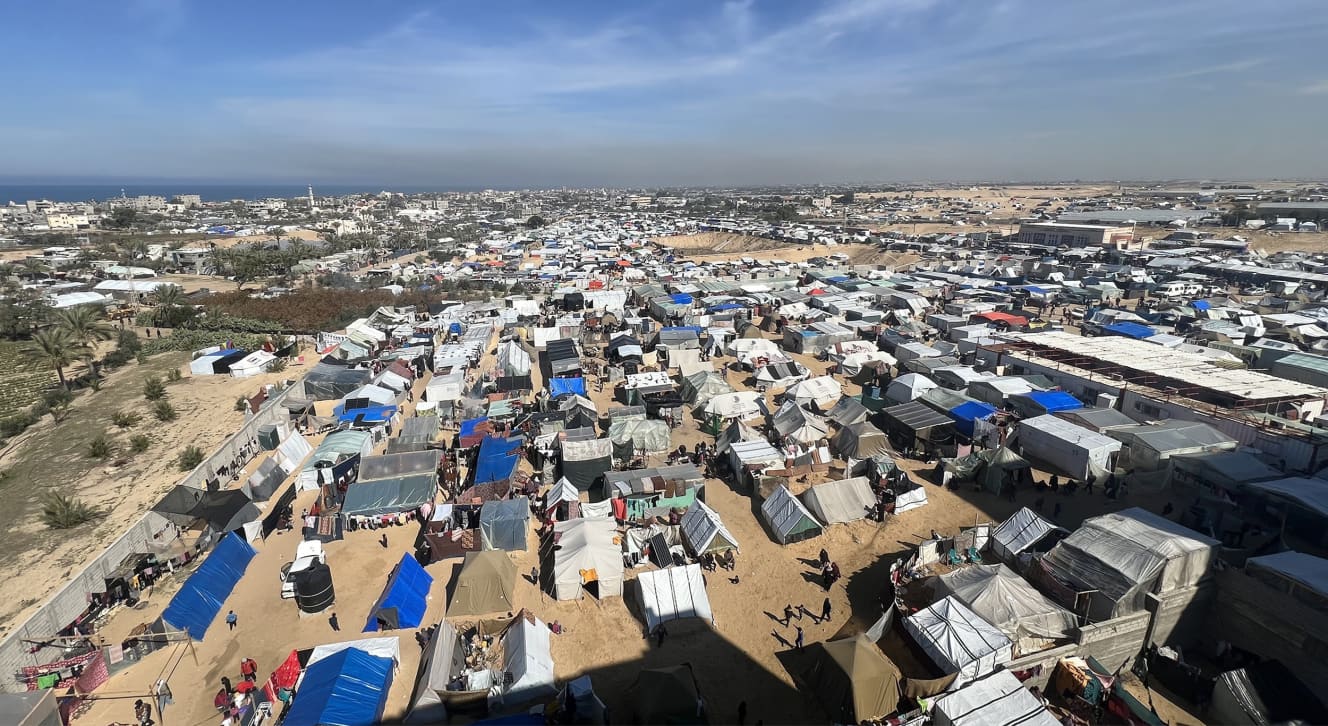Discussion on the End Point of Israel-Hamas Conflict with Nearly 30,000 Casualties
Four months after the war began, much blood continues to be spilled. Countless grave markers lined the grounds of the open-air festival in the "site of the massacre" that Hamas ambushed....

In the vast wilderness stand countless slender wooden stakes. At the tips of these stakes are color-printed photos of young faces. Although everyone in the photos is smiling, the expressions of the visitors who gaze upon them are uniformly dark. And with good reason. This is the site of the outdoor music festival Supernova, which became a ‘site of massacre’ on October 7th last year when 364 people were killed and 40 abducted by the Islamic fundamentalist group Hamas.
Four months have passed since the outbreak of armed conflict between Israel and Hamas. To delve into the current situation in the war-torn region, I entered Israel in early February. Located in the Reim district, about an hour south of the major city of Tel Aviv, is the site of the music festival. It is now a mass grave, marked by simple tombstones made of wooden sticks. Only bereaved families, soldiers, and those permitted entry are allowed to visit. A middle-aged man visiting to pay his respects laments,
“My innocent 21-year-old daughter was suddenly shot dead here. That morning, I had a bad feeling because my daughter wasn’t answering her phone. To be killed by terrorists at a music festival for peace, there’s no way to come to terms with it. That’s why I still find time to come here, whenever I can.'”
Afterwards, I walked through a kibbutz (agricultural collective) near the Gaza Strip. Explosions echoed every few minutes from the Gaza direction, and military planes and drones buzzed busily overhead. Perhaps because of this, a faint smell of gunpowder mingled with the earthy scent in the air. Captain Maya of the Israeli army, who guided me through the kibbutz, spoke with intensity, “This isn’t a scene from a movie. This is still a battlefield where fighting continues.”
The village of Kfar Aza, located in the southern part I visited, was one of the scenes of slaughter attacked by Hamas. Nineteen-year-old Ella, who lost her family, spoke quietly,
“My uncle was shot dead by Hamas fighters right in front of me, and my cousin was taken away somewhere and still hasn’t been found. In the end, four relatives who lived in this kibbutz were killed, including two children, and seven were kidnapped. My war continues until the day they safely return.”
Captain Maya added, “After the Hamas attack on October 7th, even after, many Gaza civilians came to the kibbutz in large groups on motorcycles, committing murders, rapes, and looting belongings from homes. Among the victims were women and children,” he said, not hiding his anger.
Meanwhile, in the Gaza Strip, which is facing intense attacks from the Israeli army, casualties are increasing. Those involved in military activities speak of the gruesome reality within.
“Many refugees are living in makeshift tents, terrified of the bombings. Food and medicine are scarce, and starving stray cats are even eating parts of the bodies of those killed in the bombings.”
According to the Gaza Health Authority, the number of casualties in the Gaza Strip from the ongoing conflict has reached 28,473 as of February 14th. Additionally, over 1,200 people have died on the Israeli side, with 134 individuals abducted and still missing.
However, despite the bloodshed, there is no end in sight to the war. Negotiations for a temporary ceasefire between the two sides began on February 13th, but discussions have reached an impasse. A senior Israeli military official revealed, “We are prepared to wait as long as necessary. A ceasefire is unlikely to happen unless Hamas agrees to release the hostages. In any case, we intend to eradicate Hamas.”
In reality, during the reporting, there was no sign of either side compromising in the near future. The prolongation of the war seems inevitable, with the possibility of it lasting over a year. The greatest victims of this endless hell are civilians. Under the overcast skies of winter, I couldn’t help but wish for spring to come to Israel as soon as possible.


From the March 1-8, 2024 issue of FRIDAY
Interview and text by: Toshihiro Yamada (International Journalist) PHOTO: Yamada Toshihiro (site of outdoor festival) Kyodo News (Gaza Strip) Afro (Rafah)